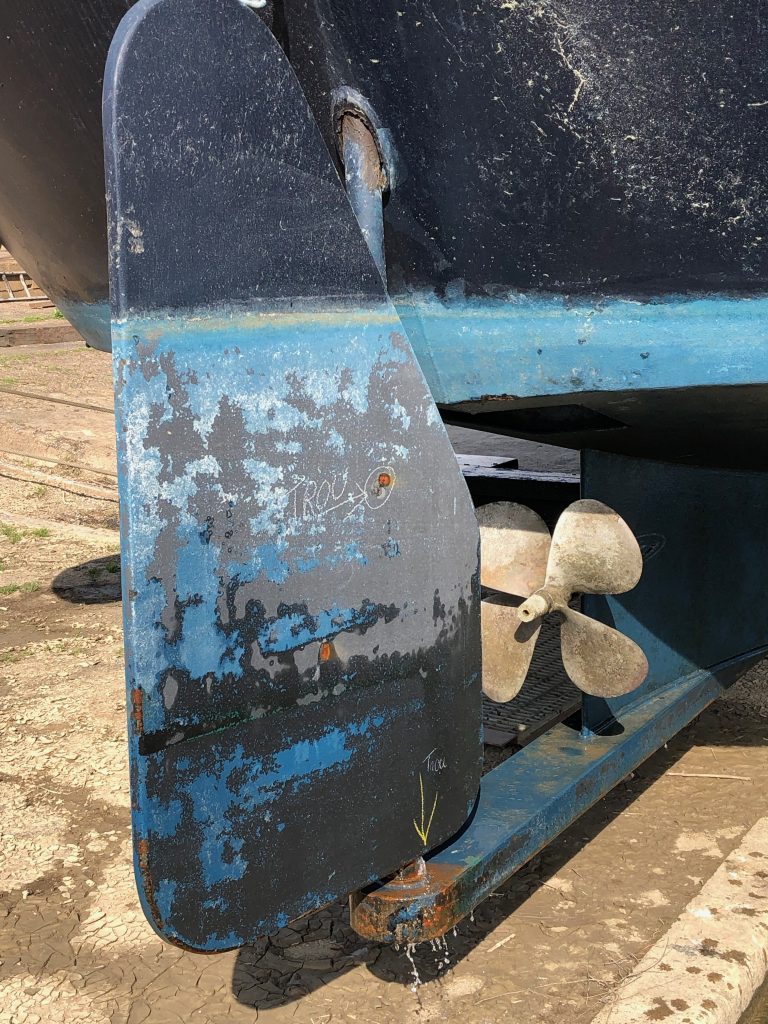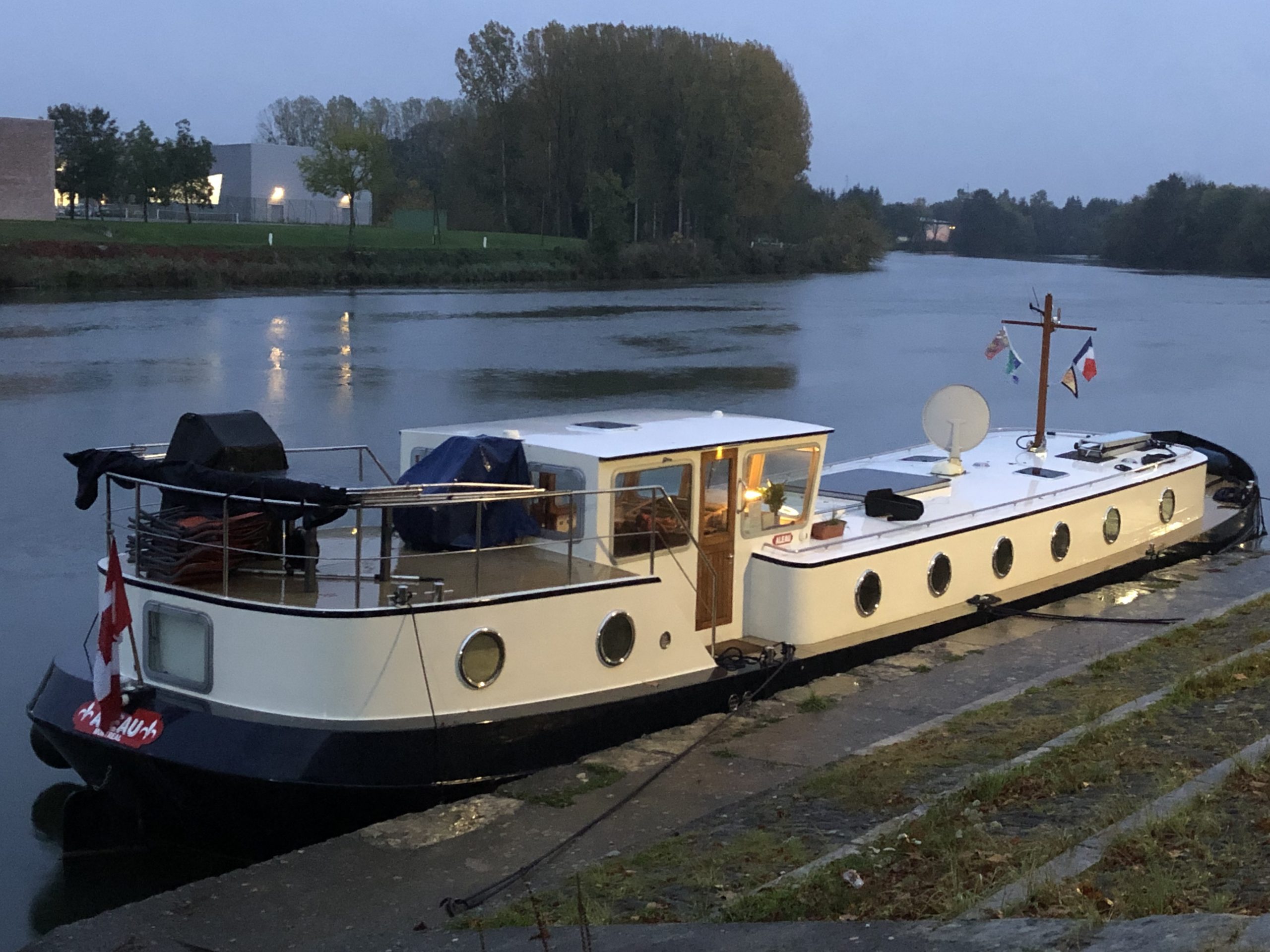The second part requires taking the barge out of the water. This is often done in a dry dock – but in our case, a slipway was used. The barge is manoeuvred onto a carriage that is underwater – with the side of the barge against two metal poles sticking up from the carriage. Men onshore hold ropes that keep the barge tight against those two poles as a massive winch slowly pulls the carriage – with Aleau resting on it – out of the water. It is a long (and expensive) process. But it has to be done.
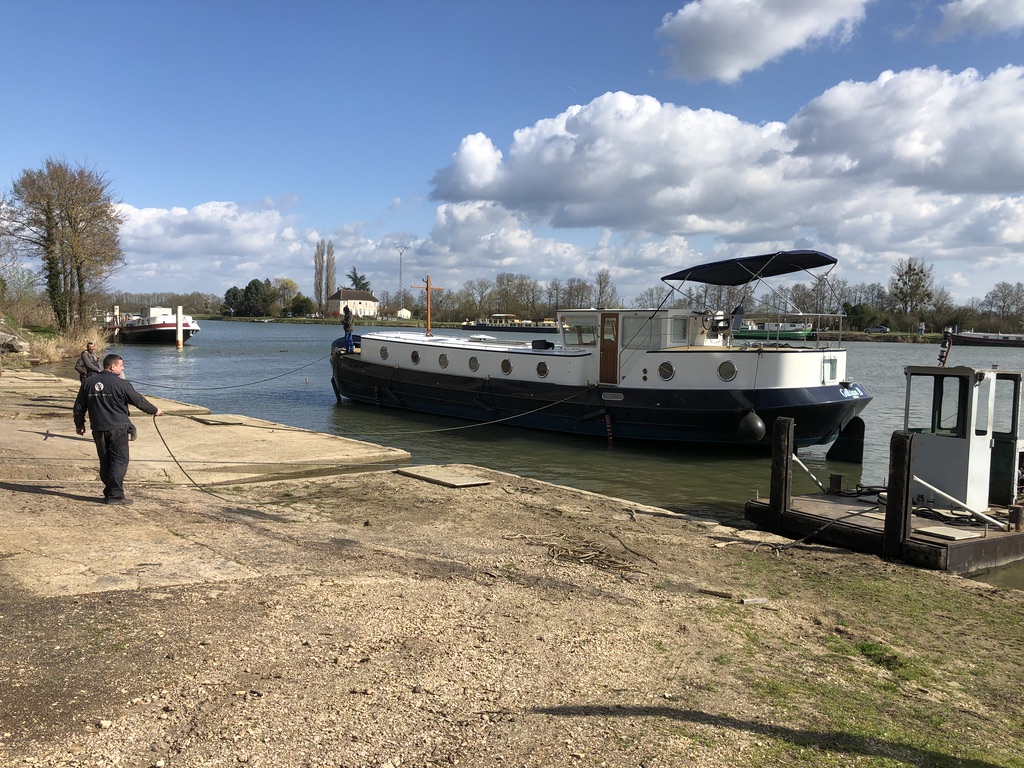
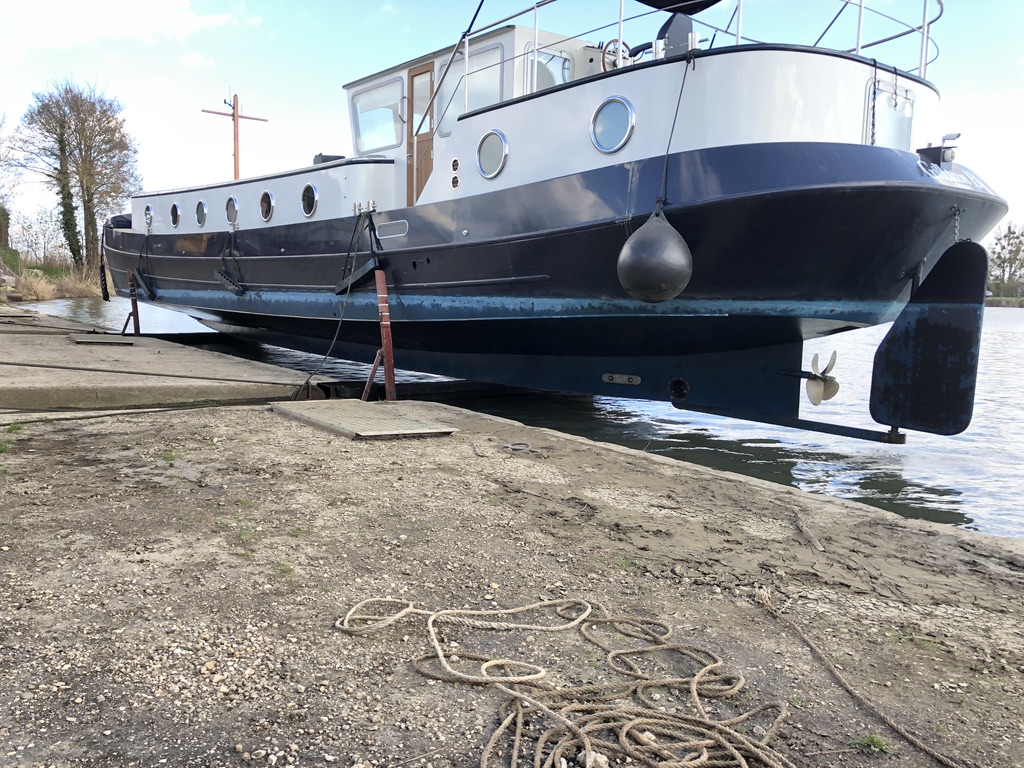
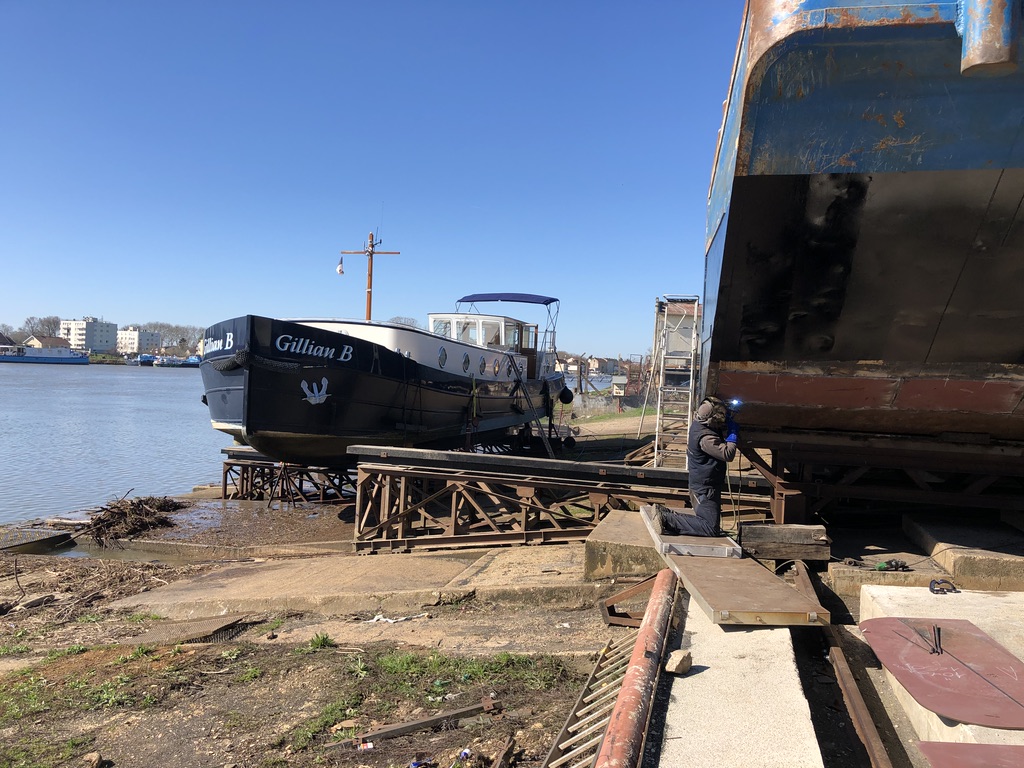
Before the inspection can begin, the hull has to be pressure-washed. The surveyor will use an ultrasound to determine the hull thickness. He does this along the entire hull – but it must be spotless before he can start.

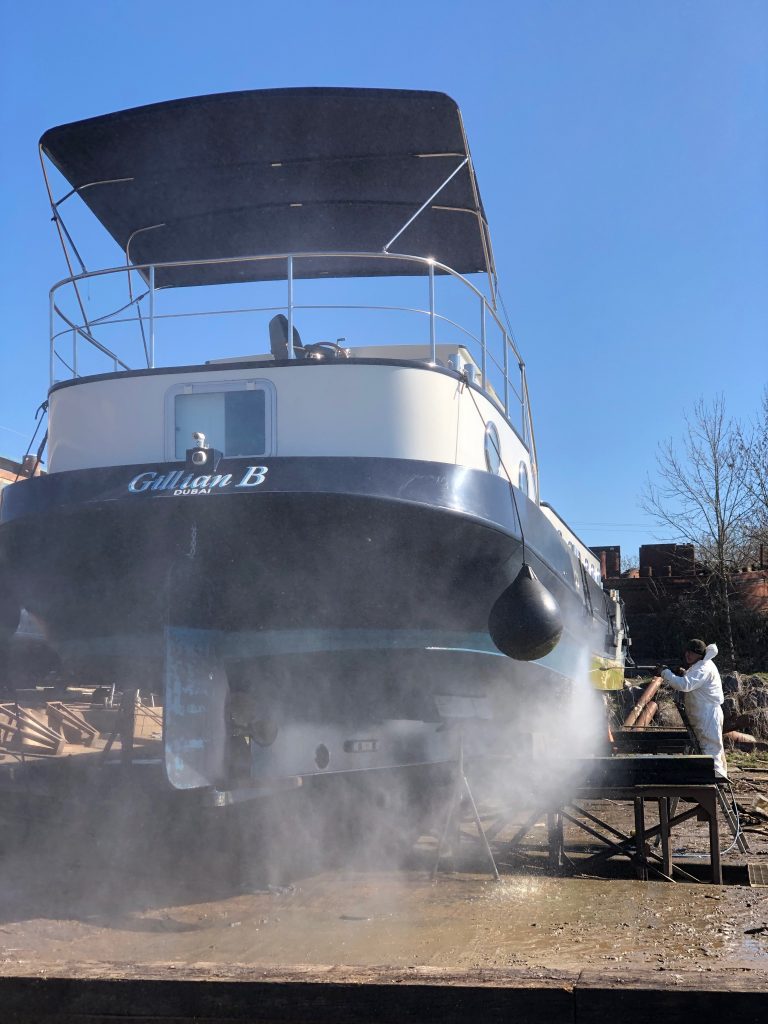
You never know what the surveyor will discover. He found a propeller shaft bearing needed to be replaced. This can only be discovered – and repaired – when the barge is out of the water. He also found two small holes in the rudder. This was highly unusual – but I have a theory as to how it happened. Discovering them speaks to both the need for a surveyor and for one who is meticulous. The holes were tiny – but he found them.
